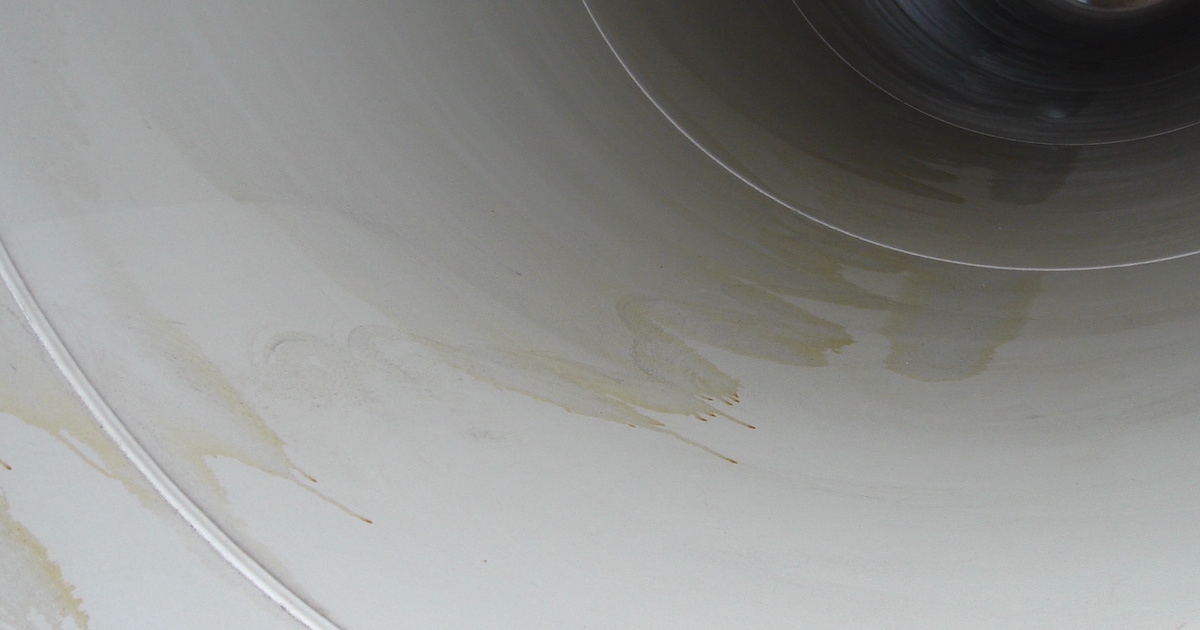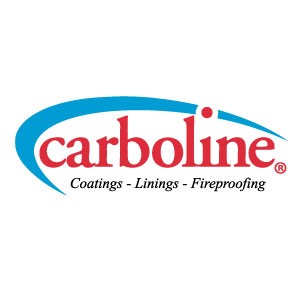
A common phenomenon in the world of industrial coatings, amine blushing is an unintended side effect of the curing reaction that acts as a bond breaker between the coating layers. It is usually a result of epoxies that are overcoated and/or applied under adverse conditions, thus causing a variety of issues with the coating surface—from faster yellowing and reduced stain resistance to compromised re-coatability and lower gloss retention.
In this article, we will provide a basic understanding for how to identify the presence of an amine blush on a coated surface, as well as discuss best practices for preventing and remediating this issue with the application or overcoating of epoxy materials.
What is an Amine Blush?
Amine blushing is a common coating failure that takes the form of a thin, waxy, or greasy film on the surface of a substrate. During the curing process of an epoxy coating, carbon dioxide and moisture can react with the epoxy's available amine and draw it to the surface of the applied film—resulting in an amine "blush" (also known as an amine "sweat" or "bloom").
An amine blush can manifest differently depending on the specific amine types that are used in an epoxy formulation. Sometimes, a blush may not be visible to the naked eye and is instead only detectable by touch. Other times, blushing is discernible by sight—ranging in color from white to amber or yellow, covering the entire surface or resembling water spots.
Four Ways to Prevent an Amine Blush
When applying an epoxy coating, it's essential to understand and control the atmospheric conditions as much as possible. Now that you have a basic understanding of amine blushing and how to identify it on a coated surface, let's discuss four different methods for prevention.
1. Let It Sweat
Some epoxy coatings require a period of induction, or "sweat-in" time, in order for the epoxy's polymer chains to cross-link fully. Do not skip this induction time if the coating's product data sheet calls for one. Doing so could leave unreacted or unused amine from the curing process with nowhere to go but up and out of the film as it dries.
2. Keep an Eye on the Weather Report
Be aware of the possibility of rain, fog, or other inclement weather where the temperature may drop, causing dew or excessive relative humidity levels. This added moisture can lead to coating failure, even when applying the coating indoors, as outside conditions can sometimes dramatically affect indoor relative humidity. An industry-accepted standard is to ensure that the air temperature is at least 5°F (2.8°C) higher than the dew point temperature, with that differential expected to rise.
3. Watch Your Substrate Temperatures
It is also essential to monitor the temperature of the coated substrate. Atmospheric conditions can change much quicker than with the substrate, especially if you're coating large or thick surfaces such as steel storage tanks and concrete floors. So, even though the atmospheric temperature is within an appropriate range for coating application, that does not necessarily mean the substrate temperature is within a suitable range.
4. Bake It
If environmental conditions are not likely to remain stable, or if a project deadline is quickly approaching, it may be best to use force curing. This is the process of elevating the temperature of the coated surface in order to speed up the cure rate without using fast-cure hardeners.
If you do force cure a coating, avoid using heat sources that produce excess carbon dioxide and moisture, such as direct-fired gas or kerosene-type heaters (also known as salamanders). These heat sources can have the same amine blush consequences as with poor environmental conditions. Instead, use indirect-fired heating/dehumidification units or electric heaters.
Additionally, it is crucial to consider the frequency and quantity of trucks, forklifts, or other fuel-burning equipment in adjacent areas that may have the potential to cause the same issues if drawn in by ventilation equipment.
How to Remediate an Amine Blush
If an amine blush has formed on the surface of a coating, you must first remove it before applying a top coat. Because an amine blush is not always visible, the surface can be tested with an amine blush test kit or even a simple pH test. As a rule of thumb, a clean coating of epoxy should have a pH near 7.
Harsh solvents like acetone or methyl ethyl ketone (MEK) will not remove an amine blush. Instead, be sure to remove all debris, dirt, grease, oil, and any other contaminants per the SSPC-SP1 standard for solvent cleaning. To do so, soak the surface with a solution of Surface Cleaner 3 mixed at a ratio of 3:1 to 10:1 as required (or equal alkaline detergent, mixed as directed). Agitate the solution with a soft bristle scrub brush, allowing it to dwell for 15-20 minutes without drying, and then thoroughly rinse clean.
Additionally, you can wash the surface with potable water solutions that contain a mild detergent and a mixture of 5% sodium hypochlorite as a bleaching agent. Immediately after application, thoroughly rinse the solution with clean potable water at pressures of 2,500-5,000 psi and a flow rate of 4-14 gallons per minute. Be sure to rinse off all cleaning and neutralizing solutions with potable water before drying and recoating.
If cleaning an amine blush off from a potable water tank, it's recommended to follow AWWA C653 for disinfection of water treatment plants. This standard details the potable water tank cleaning and disinfectant process that primarily uses, but is not limited to, chlorine-based cleaners like sodium hypochlorite.
Although it is certainly recommended that you take precautions to prevent amine blushing from occurring in the first place, even the most well-designed formulations of an epoxy coating can be at risk under the right conditions. If your coated surface does blush, the good news is that it's never too late to correct it. By following these best practices under the guidance of your coating manufacturer, you will be able to revive that glossy finish in no time.

